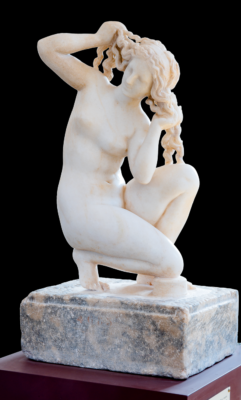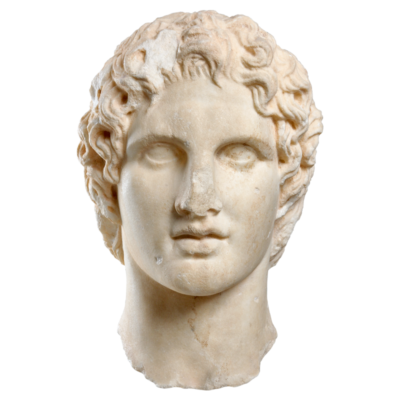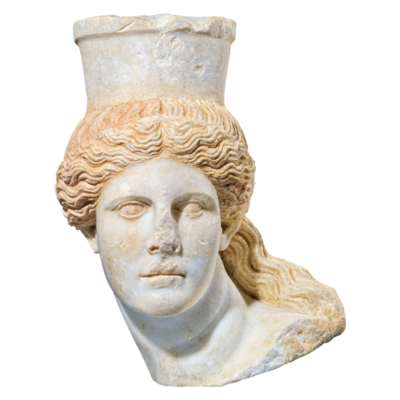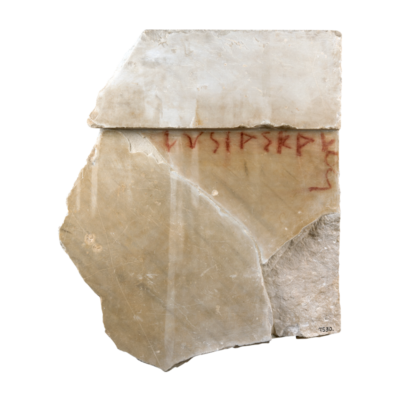Athletes
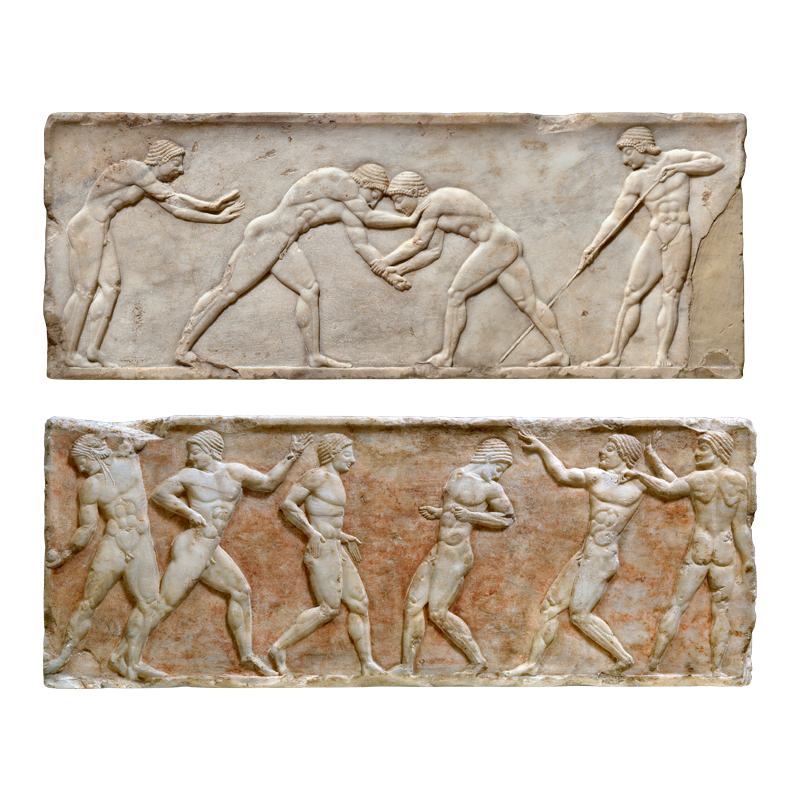
Marble base of a Kouros statue, with relief palaestra scenes on its three sides. The representations indicate that the work had been set up on an athlete’s grave.
Found in the Kerameikos of Athens, built into the Themistoclean fortification wall. Ca 510 BC. Athens, National Archaeological Museum 3476.
© Hellenic Ministry of Culture and Sports/National Archaeological Museum/H.O.C.RE. D. Photograph: Sokratis Mavrommatis.
Marble base of a Kouros statue from the Archaic Period.
On the three sides of the base, the relief figures are playing sports.
We can observe the timeless admiration for their good physical condition, but also the appreciation that ancient Greeks felt for those who trained systematically in order to stand out and excel.
A prerequisite for standing out was not only physical appearance, but also intellectual development. Young men had to achieve total acceptance by demonstrating not only their physical abilities, but also their bravery and ingenuity, which, combined with their vigor (virility and strength) and beauty, would be the hallmarks of their virtue.
Thus, the image of the naked male body, apart from aesthetic pleasure, becomes a carrier of ideas and values for the athlete himself, his family, his city and finally, his homeland.
DID YOU KNOW THAT...
• What do you know about the phrase “a healthy mind in a healthy body”?
• Everyone was allowed to participate in the athletic games, including slaves and barbarians, but attendance was strictly forbidden to women. Kallipateira was the first woman in antiquity to step inside the arena to participate in the ancient Olympic Games.
• There were no team sports in the ancient Olympic Games.
• The Olympic Games are one of the oldest surviving institutions in the world.
SEARCH & LEARN
• In ancient Greece, sports were a part of man’s broader education to develop spiritual, mental, and physical virtues. What else were young men being taught at the time?
• Can you compare the ancient Olympic Games with the modern ones? List the differences that you can identify, as well as the similarities.
TOPICS FOR DISCUSSION
• One of the virtues of the athletes in antiquity was the moral courage and bravery they displayed in order to achieve high performance. In our time, what do we have to say about the athletes of the Paralympic Games?
• How does it help people with disabilities to be included in sporting events?
• In today’s world, there are athletes/role models who stand out both for their performance and for their morals and values. One of the most famous athletes of the 20th century was the boxer Muhammad Ali, who, apart from his athletic abilities, became known for his beauty. He was the embodiment of benevolence and a role model athlete for the African American community during the civil rights movement in America.
→ Can you mention and discuss similar contemporary role models in class?

